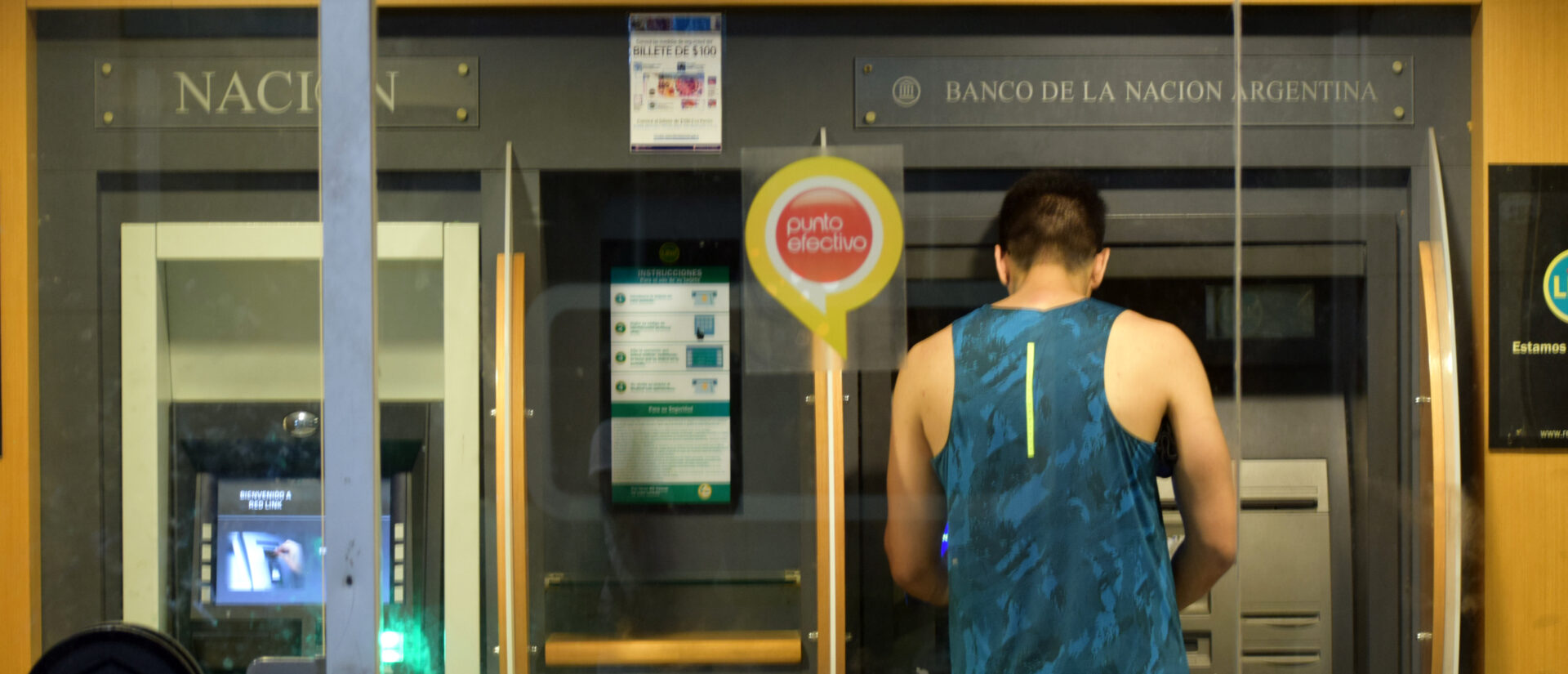
How to prevent financial crises in emerging markets?
Guest blog by Kavaljit Singh
Argentina’s currency crisis is deepening. On August 29, the peso crashed more than 7 percent – the biggest one-day fall since December 2015 when President Mauricio Macri allowed the currency to float freely and removed capital controls. In a two-minute televised address(opens in new window) on that day, Mr Macri said he had requested the International Monetary Fund to early release funds from a $50 billion stand-by arrangement. The televised address by President Macri did not help to eliminate market uncertainty. Instead, it made investors more jittery than ever, pushing the peso to its worst decline since 2015.
On August 30, Argentina’s central bank raised its policy benchmark interest by 15 percentage points to a whopping 60 percent – the highest in the world – to stop investors from pulling out money out of the country. This huge rate hike, however, failed to stem the peso’s decline. The peso slumped 13 percent further and closed at a record low of 39.2 per US dollar despite direct interventions by the central bank in the currency markets throughout the week to prop up its currency and bolster market confidence.
In 2018, the Argentine peso has depreciated by 51 percent against the dollar, making it the worst performing emerging market currency this year.
IMF and Argentina: A Rocky Relationship
Argentina has had a troubled relationship with the IMF. Many Argentines blame the IMF for the policies that led to the 2001 financial crisis which triggered social unrest and political instability. In May 2018, Argentina sought financial assistance from the IMF amid a rapid depreciation of the peso. In June, the IMF Executive Board approved a three-year, $50bn stand-by arrangement and the government immediately withdrew $15bn from this facility. It is not yet disclosed how much money has been requested for early disbursement from the IMF, but market analysts believe that Macri government is seeking at least $3bn in September to calm investors’ nerves.
Although the IMF has agreed to change the phasing of the financial program, it is not yet clear whether any new conditions would be attached to the early disbursement of funds. It is likely that the IMF will impose new austerity measures in exchange for the early disbursement of funds. In a statement issued on August 29, Christine Lagarde, Managing Director of the IMF, stated: “I have instructed IMF staff to work with the Argentine authorities to strengthen the Fund-supported arrangement and to reexamine the phasing of the financial program.” However, this statement did little to impress jittery investors, and the peso plunge continued.
A Coming Debt Crisis in Argentina?
Investors are increasingly concerned over country’s ability to meet dollar-denominated debt payments due next year. Argentina has about $25bn of the peso and dollar-denominated debt payments coming due by the end of 2019. As the depreciation of peso would lead to higher debt servicing payments, investors fear that Argentina may not be able to meet its dollar-denominated debt obligations and could default.
Argentina’s twin fiscal and current account deficits coupled with substantial foreign debt levels make its economy extremely vulnerable to tightening of global financial conditions. Additionally, agricultural exports (contributing nearly 40 percent of country’s total exports) have been hit by the worst drought in 30 years. With high inflation (currently at 31 percent) and weak economic prospects, the peso is expected to remain weak for some time.
The impacts of rates hikes on the domestic economy are already becoming visible as higher financing costs have led to a contraction of economic activity. The fiscal adjustments are having an adverse impact on growth. The economy contracted 6.7 percent in June 2018 versus the same month last year. There are strong fears that Argentina’s economy is heading for a recession in the third quarter of this year. The government has recently admitted that poverty levels would rise this year because of high inflation.
In the coming days, the Macri government will find it challenging to implement stringent austerity measures further as elections are scheduled for October 2019. Any attempt by the Macri government to impose deeply unpopular austerity policies and economic reforms will further erode his political capital and could dent his chances of winning re-election next year.
Warning Signs for EMEs
Argentina’s ongoing currency turmoil is particularly worrisome as the Macri government adopted orthodox economic policies often sought by the international investment community. His government dismantled interventionist policies; appointed market-friendly technocrats in finance ministry; took a step towards a more independent central bank; raised interest rates to a record 60 percent; implemented painful austerity measures; and secured a $50bn loan from the IMF. Yet, Argentina’s currency turmoil is far from over. The peso is still losing value, and the economy is headed towards a recession. It is amply clear that policy measures taken by the Macri government are not in line with the investors’ expectations.
The Argentine episode offers several valuable lessons to other emerging market economies (EMEs) that are facing similar financial fragilities. It illustrates that floating exchange rates do not always guarantee insulation from shocks in the exchange rate. More importantly, it has shown that the IMF’s stand-by loan of $50bn – the largest ever credit line in IMF history – utterly failed to provide an effective anchor for addressing financial vulnerabilities and bolstering market confidence.
A Very Familiar Crisis in Turkey
The Turkish lira has depreciated more than 40 percent against the US dollar since January 2018. Much of the recent steep fall in lira’s value is the result of a sharp deterioration in the US-Turkey relationship over the detention of an American pastor, but the economy’s external position is extremely vulnerable due to massive borrowing in foreign currencies by the private sector and a debt-financed consumption boom.
Nearly 70 percent of Turkey’s overall debt is denominated in US dollars and euros. Taking advantage of lower interest rates globally, Turkish firms borrowed heavily in foreign currencies (mostly in US dollars and euros) in the post-crisis period. According to JPMorgan, around $179bn of Turkey’s foreign debt matures between now and July 2019, out of which the private sector owes $146bn (81 percent). A weak lira will make it harder for Turkish private firms to repay their foreign currency debts. If funds become scarce due to a sudden stop of capital flows to Turkey, the private sector will struggle to roll over its foreign currency debt.
The weakening of lira also poses a refinancing risk to Turkish banks due to their excessive dependence on wholesale external funding (denominated in foreign currency) to fund lira-denominated loans in the country. A weak lira will make it much more expensive for Turkish banks to refinance their external market funding.
Besides, Turkey’s lira crisis poses risks of wider contagion spreading to European banking system as five big European banks (BBVA, UniCredit, ING, BNP Paribas, and HSBC) have a sizeable presence in its domestic banking system or exposure to Turkey. According to cross-border banking data from the Bank for International Settlements, Turkish borrowers owe $82.3bn to the Spanish banks; $38.4bn to French banks; $17bn to Italian banks; and $19.2bn to UK banks.
The declining foreign exchange reserves will make it difficult for Turkish authorities to finance the widening current account deficit (currently at 6 percent of GDP) or to arrest the slide of lira by intervening in currency markets by selling dollars. Turkey had official reserves of $100bn (foreign currency reserves of $77bn and gold reserves of $22bn) in July 2018.
Unlike Argentina, Turkey has not jacked up interest rates nor sought financial assistance from the IMF. The Turkish authorities have ruled out the imposition of capital controls to restrict outflows, but new restrictions were recently imposed on currency-swap transactions to curb short-selling against the lira. For liquidity support, Turkey has signed a $3bn bilateral currency swap agreement with Qatar.
Challenges for Asian EMEs
A key policy concern is the threat of financial contagion from currency collapse in Argentina and Turkey to emerging markets in Asia. Argentina’s currency turmoil has exacerbated the sell-off in currencies, equities, bonds and other financial assets in many Asian EMEs. Although Asia’s economic fundamentals appear stronger than Argentina and Turkey, the currencies of India and Indonesia are currently trading at the all-time low.
The Indian rupee remains the worst performing Asian currency this year. The rupee has depreciated by 11 percent year to date. On August 31, the rupee fell to a new record low of 71 against the US dollar. Since April 2018, the fall in the Indian rupee can be attributed to higher crude oil prices, rising US dollar, and concerns over current account deficit widening to 2.8 percent of GDP in 2018-19. Besides, the market expectations of rising interest rates in the US, the consistent outflow of foreign funds, and growing global trade tensions have also contributed to the weakening of the rupee.
The Indonesian rupiah is the second-worst performing Asian currency this year, after the Indian rupee. It has depreciated 7.8 percent this year. Spooked by Argentine peso crash, Indonesia’s rupiah fell to 14,750 per dollar – the lowest level since the Asian financial crisis of 1998. Even though the Indonesian central bank has been selling billions of dollars from its forex reserves kitty to stem the fall of rupiah. It has also raised interest rates four times since May 2018.
The widening current account deficit remains one of the key concerns for Indonesia. While the rupiah is continuing to weaken, Indonesia’s bond markets have also come under selling pressure as the foreign ownership of government bonds is very high. Foreigners hold about 40 percent of the government bond market in Indonesia.
The Chinese yuan has fallen more than 8 percent against the dollar amid fears of a trade dispute with the US, rising US interest rates, and concerns over an economic slowdown in the domestic economy. Back in 2015-16, the Chinese authorities spent nearly a trillion dollars from its forex reserves kitty to stabilize the currency. However, this time the authorities are shying away from direct interventions in the currency markets. The current policy response is directed towards using regulatory tools such as raising reserve requirement ratio on foreign-exchange forward contracts from zero to 20 percent that will make it more expensive to short the yuan.
The Importance of Capital Controls and Macroprudential Tools
Maintaining financial stability is a big policy challenge for all EMEs. The recent episodes of financial crisis have amply shown that even those countries that followed seemingly sound macroeconomic policies also got exposed to “sudden stops” or large reversals in capital flows. Hence the moot question is: How should emerging country policymakers respond to prevent rapid currency depreciation and a sudden reversal in capital flows?
To begin with, EME policymakers should proactively enforce capital controls to stem the risks of rapid capital outflows. The orthodox view is that capital controls do more harm than good. Critics question the effectiveness of capital controls, especially on outflows. Despite the negative connotation associated with the word “controls,” there are many positive experiences of using controls on outflows as a crisis management tool. This long list includes Malaysia in 1998, Iceland in 2008, Cyprus in 2013, and China in 2016.
The EME policymakers can impose controls on both inflows and outflows of capital to insulate themselves from external shocks as well as to provide some breathing space to address longer-term structural problems. Controls on inflows can be helpful in altering their composition in favor of less risky and longer maturity flows. Brazil is a well-known case in point. During 2009-11, Brazil adopted a series of capital controls (including a tax on portfolio investments) to discourage inflows to combat the appreciation of the real.
Rather than using as a last resort and on a temporary basis, capital controls should have a place in the standard policy toolkit and could be deployed by EMEs keeping in mind their specific policy frameworks and country contexts.
Given the prevailing adverse market conditions, policymakers in Argentina and Turkey should shun their rigid stance against capital controls and adopt a pragmatic approach towards managing destabilizing capital flows. The decision making in a complex, uncertain and financially interconnected world should not be driven by outdated neoliberal orthodoxy.
In parallel, EME policymakers should also impose macroprudential policy measures (such as caps on foreign currency lending, credit controls, and countercyclical capital requirements) for containing financial boom and bust cycles.
It is well recognized that policy interventions are more warranted during the boom period to limit the buildup of risk in the financial system. In this regard, it is desirable to use both capital controls and macroprudential measures in an emerging economy facing a surge of capital inflows (“sudden floods”). The EME policymakers can choose the optimal mix of capital controls and macroprudential measures in mitigating currency and financial risks.
Besides, EME policymakers need to stay extra vigilant about corporate debt issued in foreign currencies by non-financial corporations due to the potential risks associated with the twin currency and maturity mismatches. Overall, there is a greater need for improving financial regulation and market surveillance in EMEs.
Discourage “Hot Money” Flows
In the medium to long run, policymakers in EMEs should concentrate on attracting long-term capital flows that improve the country’s productive capacity through the transfer of technology and managerial know-how, rather than short-term volatile capital flows (such as bank lending and portfolio investments) that have tenuous linkage with the real economy and are prone to abrupt reversals. The role of short-term portfolio flows in causing or exacerbating financial crises in many EMEs is well documented.
It is high time that EME policymakers should rethink their approach towards global financial integration as previous experiences of financial liberalization (especially capital account liberalization) in many EMEs have proved to be costly and exposed them to financial crises of various kinds. While the actual benefits of capital account liberalization are hard to find. Particularly, the liberalization of short-term capital flows should be avoided.
The Need for International Cooperation
No denying that EME policymakers should adopt sound domestic policies and improve macroeconomic fundamentals but it may not be sufficient to withstand financial shocks that EMEs are currently facing from spillovers of monetary policy normalization in the US and other advanced economies. Hence, there is a need for global policy coordination. The advanced economies should also realize the need for global policy coordination as increased financial market volatility can generate significant spillback effects on their economies.
Post-crisis, the importance of global financial safety net has been well recognized. In this regard, bilateral swap agreements and regional financing arrangements (such as Chiang Mai Initiative, and the BRICS Contingent Reserve Arrangement) can be useful in providing immediate liquidity support when a crisis hit a country.
International policy cooperation is vital for managing cross-border volatile capital flows that can create financial fragility in the EMEs. Apart from imposing capital controls within the recipient countries, there is a logical reason for imposing capital account restrictions at the source countries to manage destabilizing capital flows at both ends. Even though the prospects of such a cooperative multilateral approach remain bleak but its potential benefits for global financial stability are enormous.
So far G20 has proved to be ineffective in developing a collective response to manage policy spillovers and spillbacks. As financial risks are likely to amplify in the coming months, it is critical that all G20 members cooperate to identify and manage risks collectively. Otherwise, what’s the point of G20 harping about promoting global financial stability?
This article was originally published on madhyam.org.(opens in new window)
Partners
-
Written by Kavaljit Singh
Related news
-
Why share buybacks are bad for the planet and peoplePosted in category:Opinion
 Myriam Vander StichelePublished on:
Myriam Vander StichelePublished on: Myriam Vander Stichele
Myriam Vander Stichele -
 The trillion-dollar threat of climate change profiteersPosted in category:Long read
The trillion-dollar threat of climate change profiteersPosted in category:Long read Myriam Vander StichelePublished on:
Myriam Vander StichelePublished on: -
The treaty trap: The miners Published on:
 Vincent KiezebrinkPosted in category:Publication
Vincent KiezebrinkPosted in category:Publication Vincent Kiezebrink
Vincent Kiezebrink

